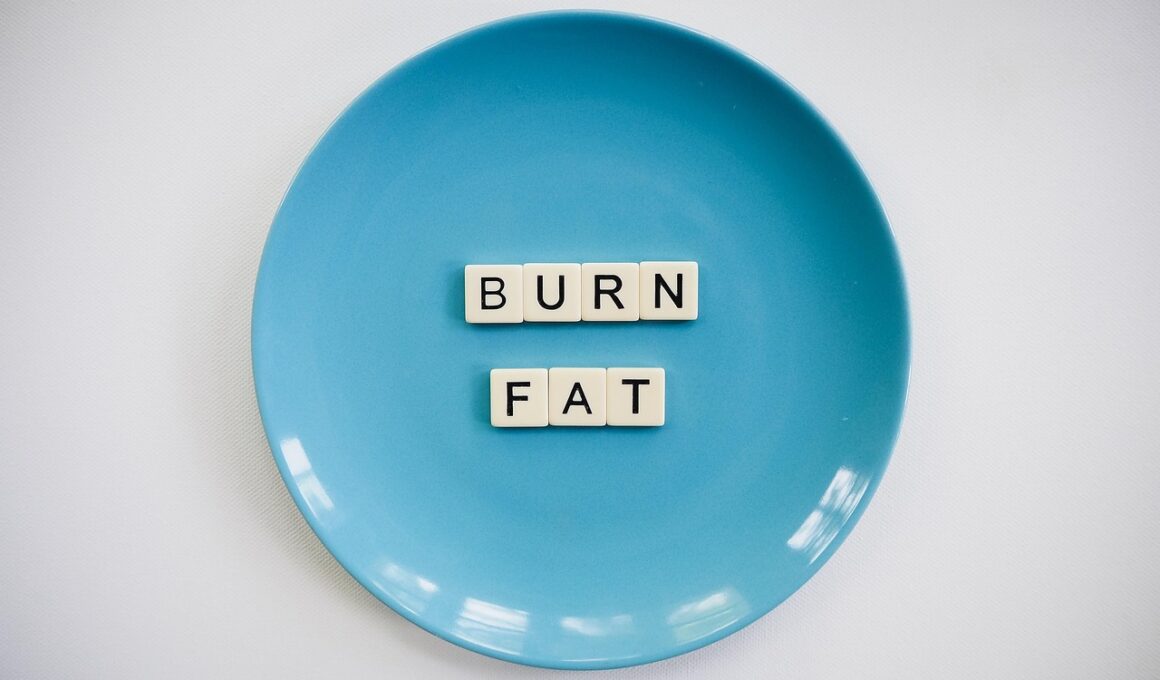Meal Planning on a Ketogenic Diet: Strategies for Weight Loss
Meal planning plays a crucial role in successfully following a ketogenic diet for weight loss. When you set aside time to plan your meals, you can ensure you’re staying within the parameters of this high-fat, low-carbohydrate diet. The key to a ketogenic meal plan is to focus on foods that are rich in healthy fats while limiting carbs significantly. This way, your body enters a state of ketosis, leading to efficient fat burning. Consider using a weekly planner to jot down your meals and snacks. Make an inventory of your kitchen staples like coconut oil, avocados, nuts, seeds, and leafy vegetables. These items should be your go-to foods. Also, consider batch cooking or preparing meals in advance – this not only saves time but also makes it easier to stick to your nutritional goals. Always keep keto-friendly snacks on hand to resist temptations. Incorporating diverse recipes can help keep your meals exciting, so explore various cooking methods to make your diet enjoyable and sustainable. Adjust your meals as needed, based on your progress toward weight loss goals.
Moreover, understanding macronutrients is essential when meal planning on a ketogenic diet. The primary ingredients should be around 70% fats, 25% protein, and no more than 5% carbohydrates. You can track these ratios using various nutrition apps or journals that can keep you accountable and help you understand how your daily food intake aligns with these ratios. Pay attention to hidden carbs, especially in sauces, dressings, and prepackaged foods. Being vigilant will ensure you don’t accidentally exceed your carb limit. It may also be beneficial to consult with a nutritionist who specializes in ketogenic diets. They can provide personalized guidance and may recommend specific foods that are allowed. Furthermore, engaging in community forums about ketogenic diets can provide insights. Sharing experiences and gathering tips from other users can significantly enhance your meal planning strategy. Don’t hesitate to experiment with different flavors and cuisines to keep your meals interesting and flavorful. Plan for the potential roadblocks in your weight loss journey by preparing strategies for dining out or social events. This preparation can be key to maintaining consistency.
Essential Ingredients for a Ketogenic Meal Plan
When assembling your ketogenic meal plan, it’s vital to have a list of essential ingredients that support fat-burning and satiety. Start with high-quality proteins such as grass-fed beef, chicken, and fatty fish. Eggs are a versatile option for breakfast or snacks and are high in protein, making them a great addition. Then transition into healthy fats like olive oil, avocado oil, and coconut oil, which are not only essential for cooking but also provide necessary calories. Consider incorporating plenty of non-starchy vegetables like spinach, kale, cauliflower, and broccoli, as these will add fiber and vitamins to your diets while keeping carbohydrates minimal. Fermented foods like sauerkraut and kimchi are beneficial, too, as they promote gut health. Don’t forget about nuts and seeds; they offer a convenient snack option and are packed with nutrients. Lastly, berries in moderation can satisfy your sweet tooth while being low in sugar. By stocking your kitchen with these ingredients, you’ll ensure you have everything you need to create delicious and satisfying meals that align with your ketogenic goals.
Preparing meals that adhere to the ketogenic diet involves a bit of creativity, especially when it comes to breakfast and snacks. Starting your day with a keto-friendly breakfast can set a positive tone. Options include scrambled eggs with spinach, avocado salad, or smoothies made with almond milk and protein powder. For snacks, consider cheese sticks, olives, or cucumber slices with creamy dips. Portions should be controlled to match your dietary needs, so make sure to measure servings as necessary. Additionally, try to have a variety of ready-to-eat options at your disposal. Preparing muffin tins with egg cups filled with bacon and veggies can be an excellent meal prep solution. These can be easily reheated and consumed in under five minutes. Introducing different herbs and spices can diversify flavors and enhance meals without adding extra calories. Experimenting with keto-friendly recipes such as cauliflower rice, zucchini noodles, or almond flour pancakes can keep your diet enjoyable and fulfilling. Incorporating a lifestyle of meal prepping with a focus on the ketogenic approach will make your weight loss journey smoother and more successful.
Weekly Meal Planning Tips
An effective weekly meal plan plays a crucial role in achieving success on a ketogenic diet for weight loss. Start by allocating a specific day for meal prep, ideally a day when you have more free time. Mapping out your meals gives you clarity on what to buy and reduces impulsive eating. Consider creating a template with sections for breakfast, lunch, dinner, and snacks. For every meal, select options that align with your macro ratios. Using a grocery list based on your plan can help streamline shopping. When you go grocery shopping, stick to the perimeter of the store, where fresh ingredients are primarily located. Creating meals in bulk can save time for the week and ensure that you always have food ready to go. Freeze leftovers in individual portions for convenience. Lastly, try not to overcomplicate your plan. Keep your recipes simple with easy-to-prep ingredients. The combinations of various meats, fats, and low-carb vegetables can create a balanced meal. Focus on maintaining sustainability within your plan to make long-term weight loss a reality.
Monitoring your progress while following a ketogenic meal plan is vital for long-term success. Keep track of food intake, energy levels, and weight changes to ensure that you are achieving your desired goals. Running a journal can help you identify patterns in your eating habits, and thus allow you to make the necessary adjustments along the way. Using a kitchen scale helps you manage portion sizes accurately, preventing unintentional overeating. Joining a community dedicated to ketogenic diets offers additional accountability and support. You can share experiences, recipes, and tips, making weight loss feel less isolating. Utilize tools like progress photos and measurement tracking to celebrate your victories, no matter how small. Consistency is key to overcoming plateaus, and periodically assessing your progress allows you to plan your next steps effectively. More advanced strategies may include adjusting macros based on how your body responds. Incorporating exercise can also enhance weight loss efficiency; simple activities can complement your modified diet to reveal quicker results. Stay informed and adapt to changes in your body to ensure sustained success on your weight loss journey.
Conclusion: Embracing Long-term Success
In conclusion, meal planning on a ketogenic diet can significantly aid in achieving weight loss goals when approached strategically. Embrace the food diversity that this diet allows, making it not just sustainable but also enjoyable. By focusing on quality ingredients and maintaining a routine, you can successfully navigate the challenges that often come with dietary changes. Remember that meal planning eliminates much of the guesswork associated with eating during busy days, empowering you with healthy choices at your fingertips. Preparing meals in advance will save you precious time, prevent eating out, and keep you aligned with your dietary objectives. Make adjustments to your meal plan according to your preferences and dietary needs, which is an essential part of this journey. As you continue, it’s important to remain patient; weight loss takes time. Utilize support systems, community engagement, and personal accountability measures. Focusing on health rather than the scale will help to create a positive mindset toward your weight loss endeavors. Above all, remain committed to your meal planning and healthy choices; embracing these principles will ensure long-term success.
Meal planning is essential to succeeding with a ketogenic diet for effective weight loss strategy. The more time you take to plan your meals, the better your chances of shaving off those pounds. Key to executing a ketogenic plan is to prioritize foods loaded with healthy fats while drastically reducing your carb intake. This helps your body shift into ketosis, where it burns fat efficiently. A helpful practice is to use a weekly planner to map out meals and snacks, ensuring the focus remains on keto-friendly options. Conduct an inventory of pantry staples including coconut oil, avocados, nuts, seeds, and green leafy vegetables. These should become kitchen essentials. Consider batch cooking to save time—it simplifies sticking to dietary goals by having meals ready-to-go. Moreover, always keep a range of keto-friendly snacks available to avoid temptation. Exploring diverse recipes and cooking methods can make your meals more exciting. To help maintain progress, adapt your meals as per your evolving weight loss journey. Success with meal planning on a ketogenic diet greatly enhances consistency, which is vital for achieving weight loss goals.


